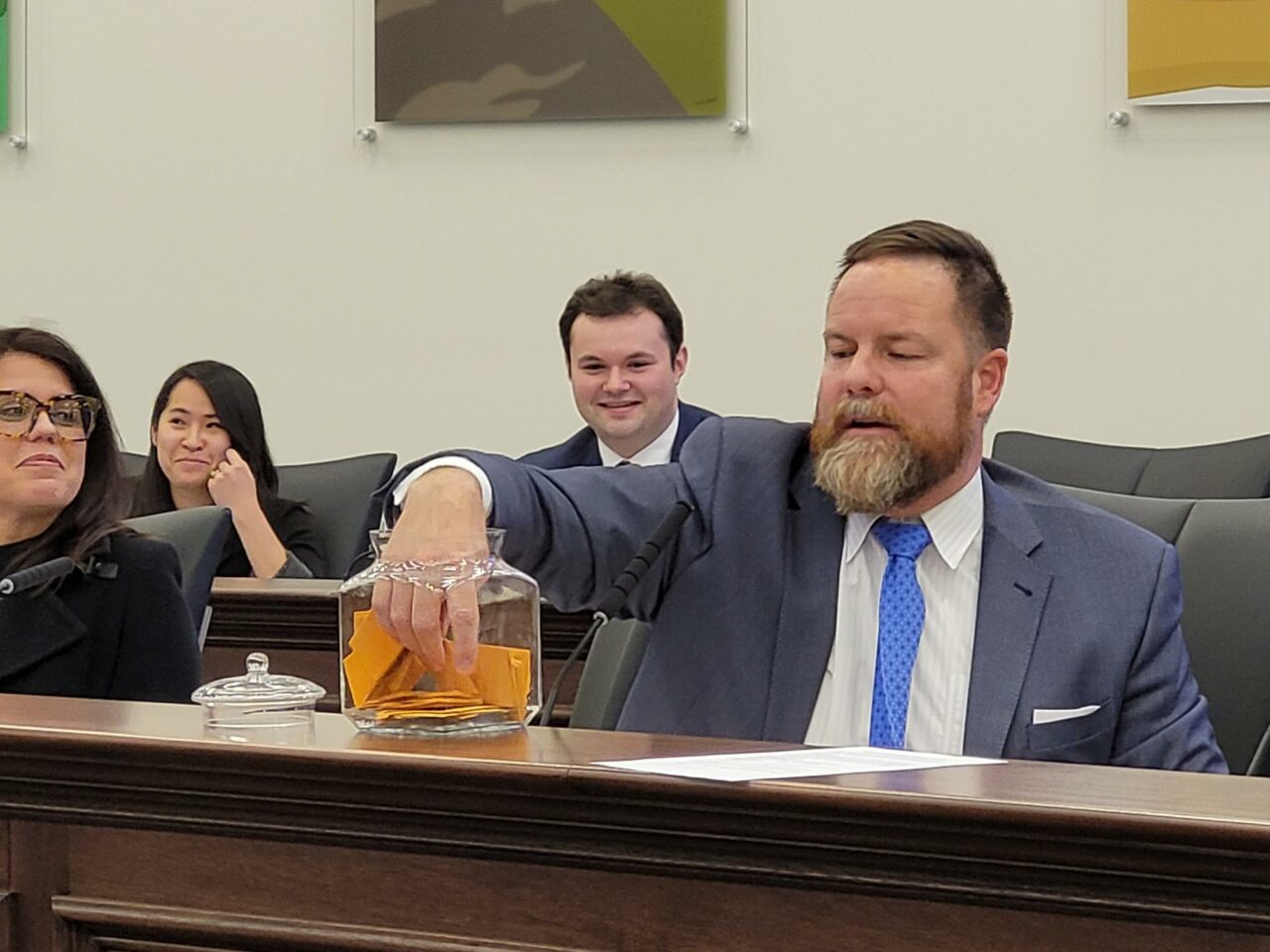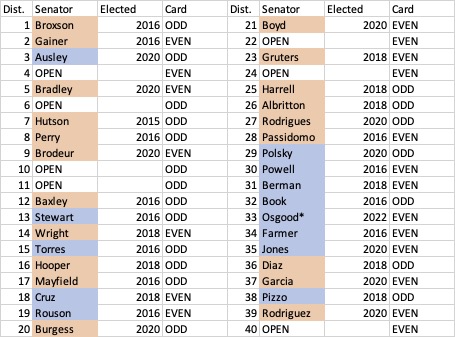
The cards have been drawn.
A random process has determined which Senate districts will be numbered with odd and even numbers. Seemingly a matter of only clerical importance, that actually could determine how long a political career will last for some senators. It could even impact the tenures of senators not yet elected to the Senate. Staff for the Senate Reapportionment Committee is in the process of renumbering a draft Senate map (S 8056) that could be approved on the Senate floor as soon as next week.
For those in the know, the important part is this. The following districts on the draft map will now have odd numbers: 1, 3, 6, 7, 8, 10, 11, 12, 13, 15, 16, 17, 20, 25, 26, 27, 29, 32, 36 and 38.
The following will have even numbers: 2, 4, 5, 9, 14, 18, 19, 21, 22, 23, 24, 28, 30, 31, 33, 34, 35, 37, 39 and 40.
The cards were drawn from a jar at random by Sen. Aaron Bean, a Jacksonville Republican and professional auctioneer.
As for explanation of the significance, the Florida constitution has eight-year term limits on members of the Legislature. Senators who have served six years haven’t reached the cap, so they can file for another four-year term. That would give them 10 consecutive years, presuming they continue to win elections.
While running for two four-year terms would naturally term someone out, the once-a-decade redistricting process means some senators will move election tracks.
Florida law states all Senate districts must hold new elections after redistricting to guarantee no citizens go unrepresented for any period of time. Those who win Senate races this year in even-numbered districts will win traditional four-year terms. But those in odd-numbered districts will win two-year terms and face re-election again in 2024.
On a bigger picture, that gives the potential for some senators to serve a total of 10 years.
To that point, Sens. George Gainer, Darryl Rouson, Kathleen Passidomo, Bobby Powell and Gary Farmer were all first elected in 2016. If they stay in their current districts, they end up with even-numbered districts. That means if they win terms, they will be able to serve in the Senate until 2026.
Meanwhile, Sens. Doug Broxson, Keith Perry, Dennis Baxley, Linda Stewart, Victor Torres, Debbie Mayfield and Lauren Book were all also elected in 2016. But their districts — presuming they run to represent the same region — ended up with odd numbers. They also face re-election in November, but if they win their terms will expire in 2024. At that point, they will have served eight years and can’t run again.
Sen. Travis Hutson, who came in during a nonelection year, also represents a district that will now have an odd number. He has served seven years and can run again, but will be capped out in two years, at which point he will have served nine years.
The consequences linger beyond the next two elections. Sens. Ed Hooper, Gayle Harrell, Ben Albritton, Manny Diaz and Jason Pizzo represent odd-numbered districts, but can still serve 10 years by winning in 2022 and 2024.
Sens. Jennifer Bradley, Jason Brodeur, Jim Boyd, Shevrin Jones, Ileana Garcia and Ana Maria Rodriguez, meanwhile, can win four-year terms in 2022 after having already served two years since winning in 2020. Assuming they win re-election this year, each would then get to run for another four-year term in 2026 and also land a decade of service in the Senate.
On top of that, there are open seats in Senate Districts 6, 10 and 11. Since all will be odd-numbered at the end of this process, that means whoever wins in November will get just a two-year term, but can still get 10 years by winning in 2022, 2024 and 2026.
Granted, all this becomes complicated as the ground underneath senators shifts, and they may end up living in different districts than they now represent. It’s still unclear how many will move to new districts or run again even if, in some cases, that means running against another incumbent.
Stay tuned for map approvals to find out how all that shakes out.

Clarification: A prior version of this story suggested senators elected to complete terms of prior senators don’t have years applied to term limits, but there is dispute about this.



